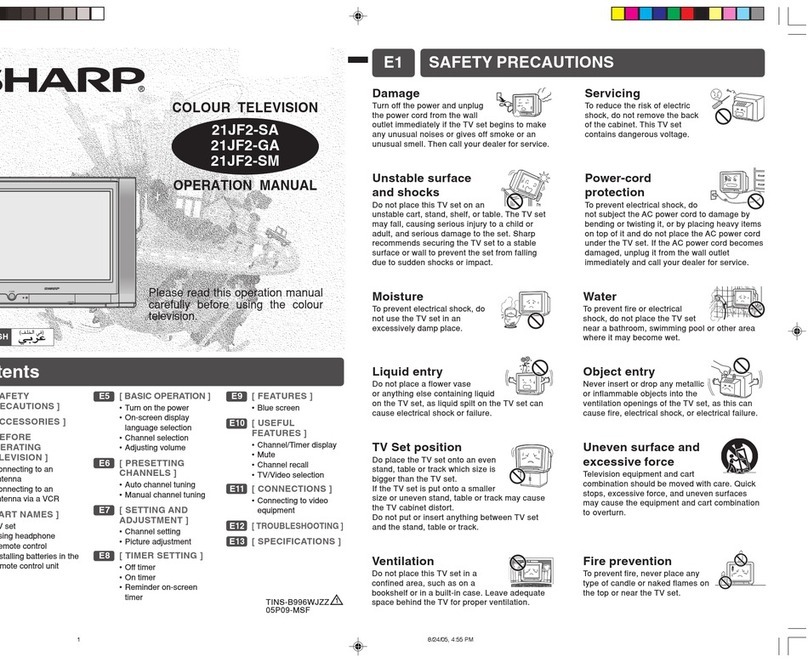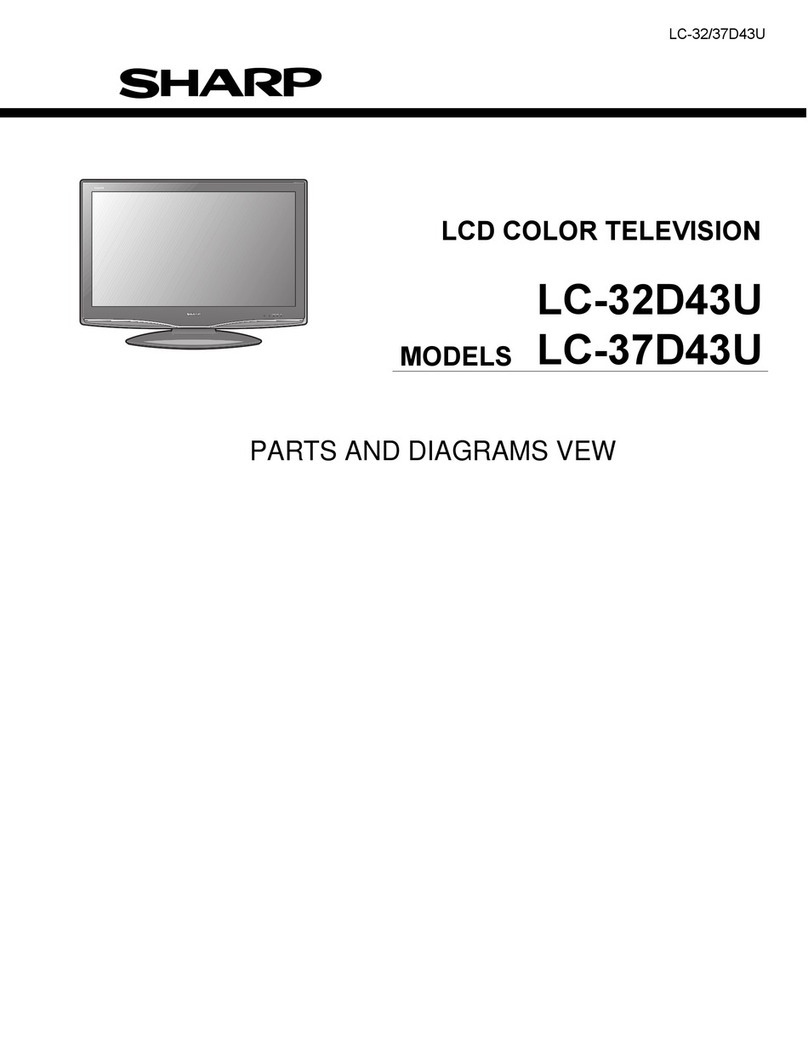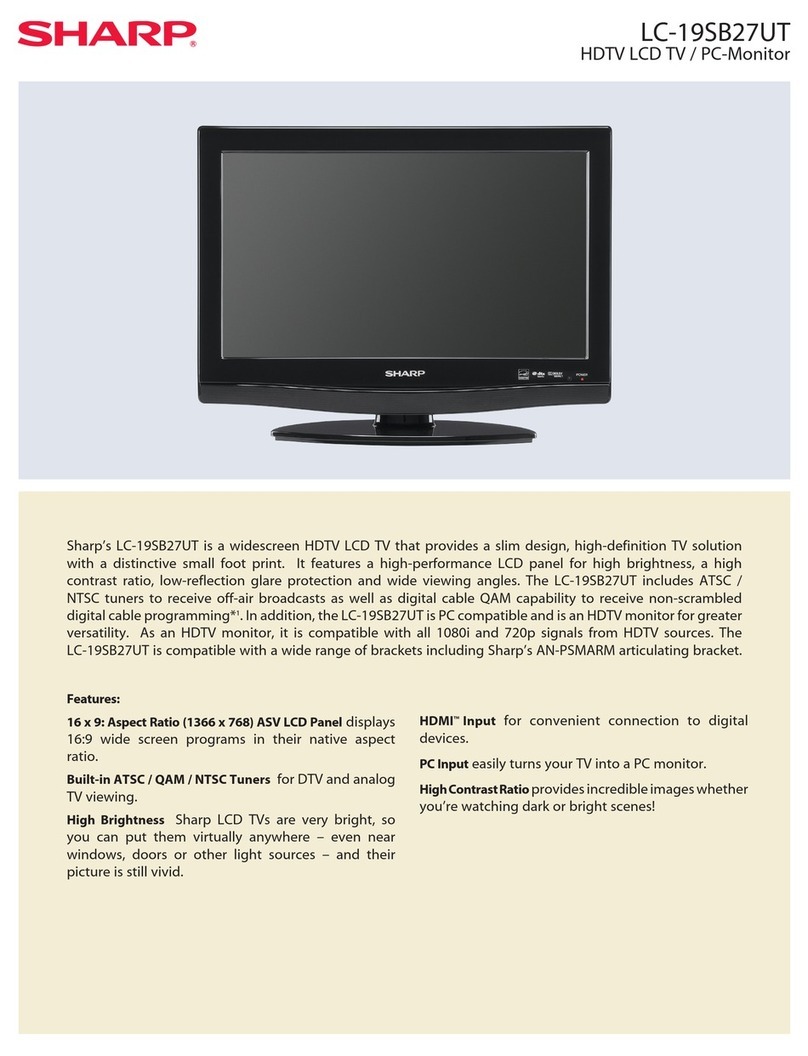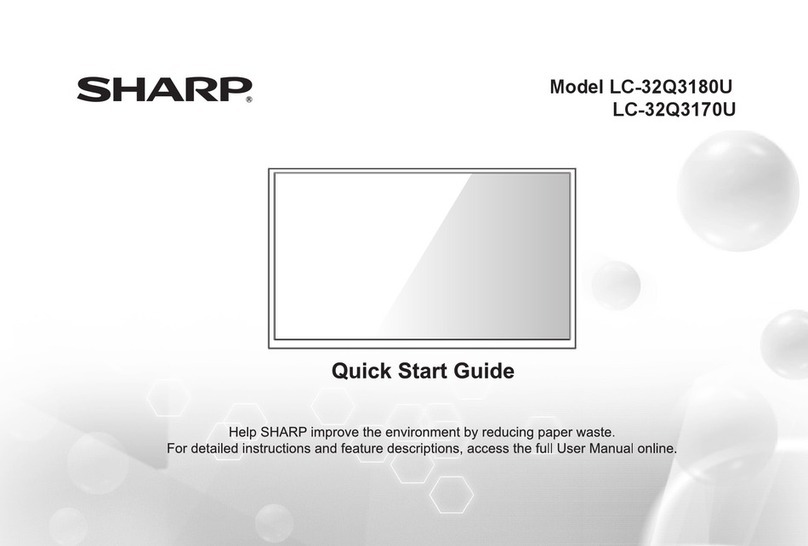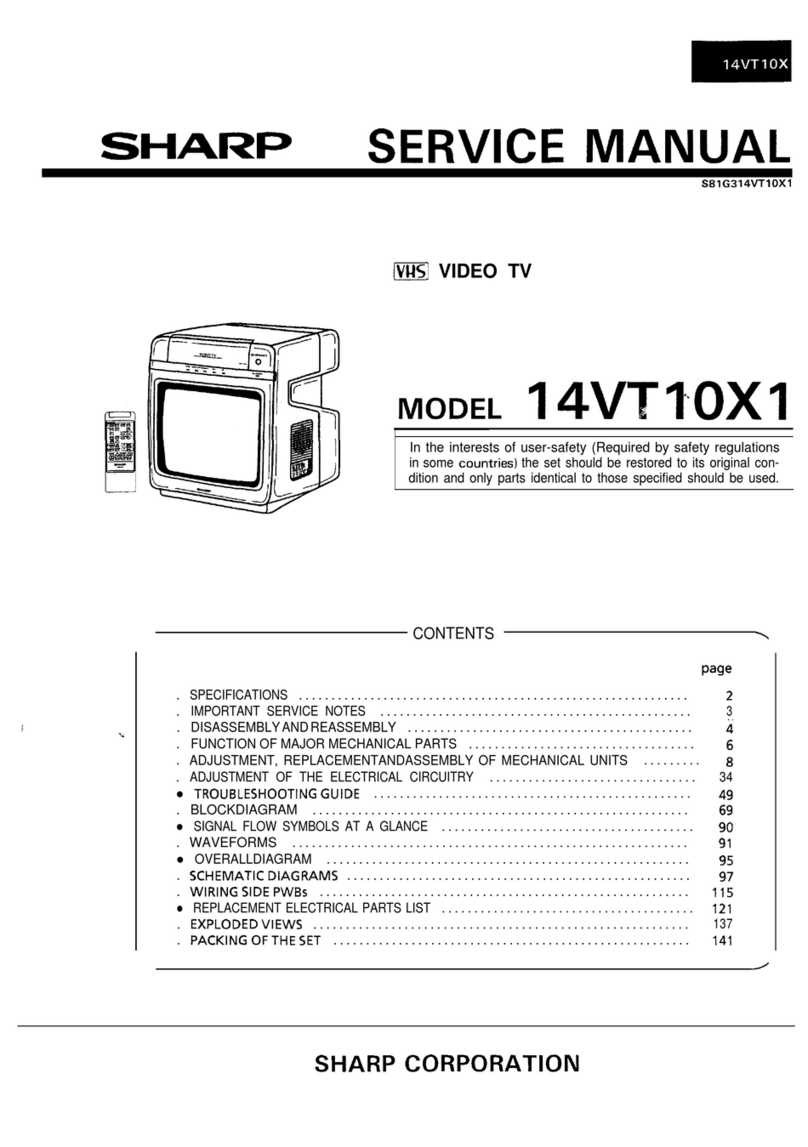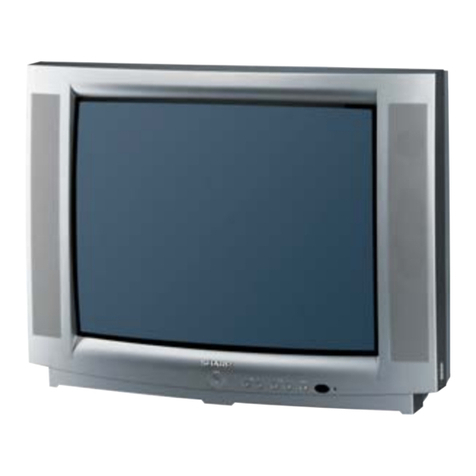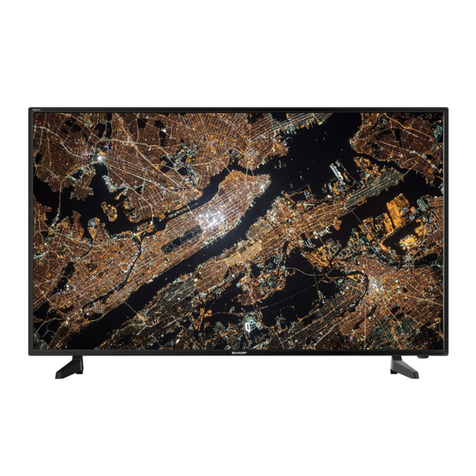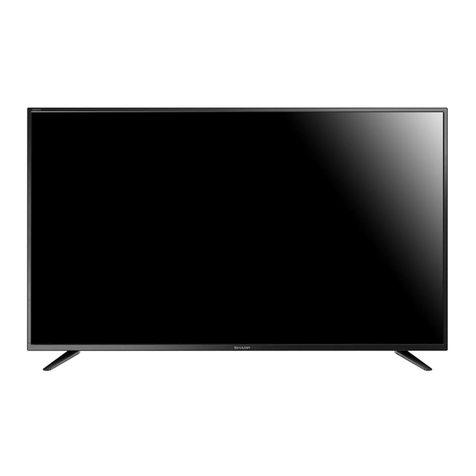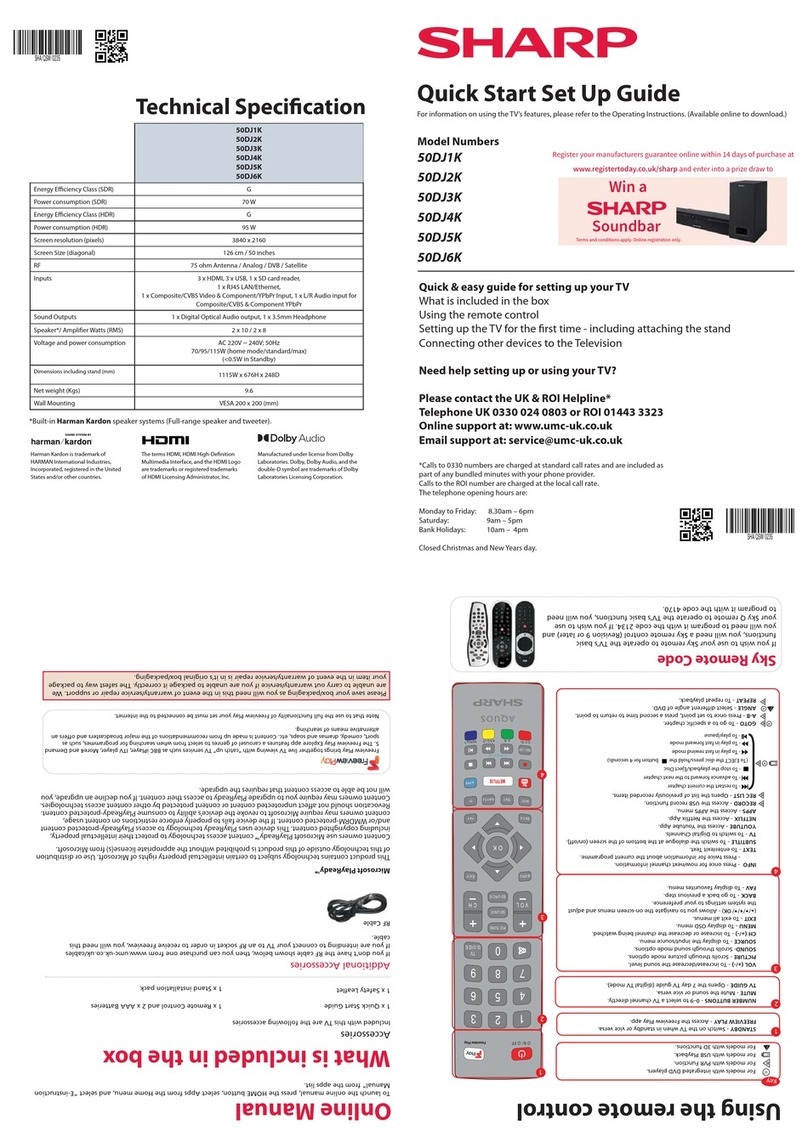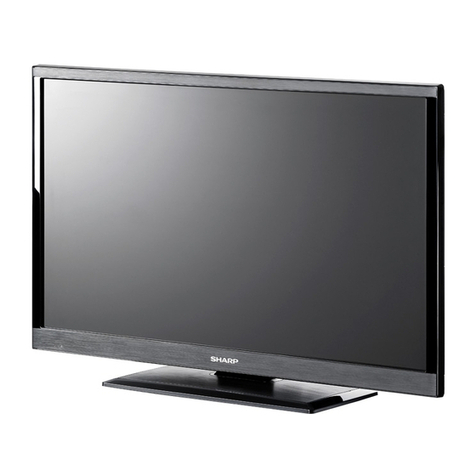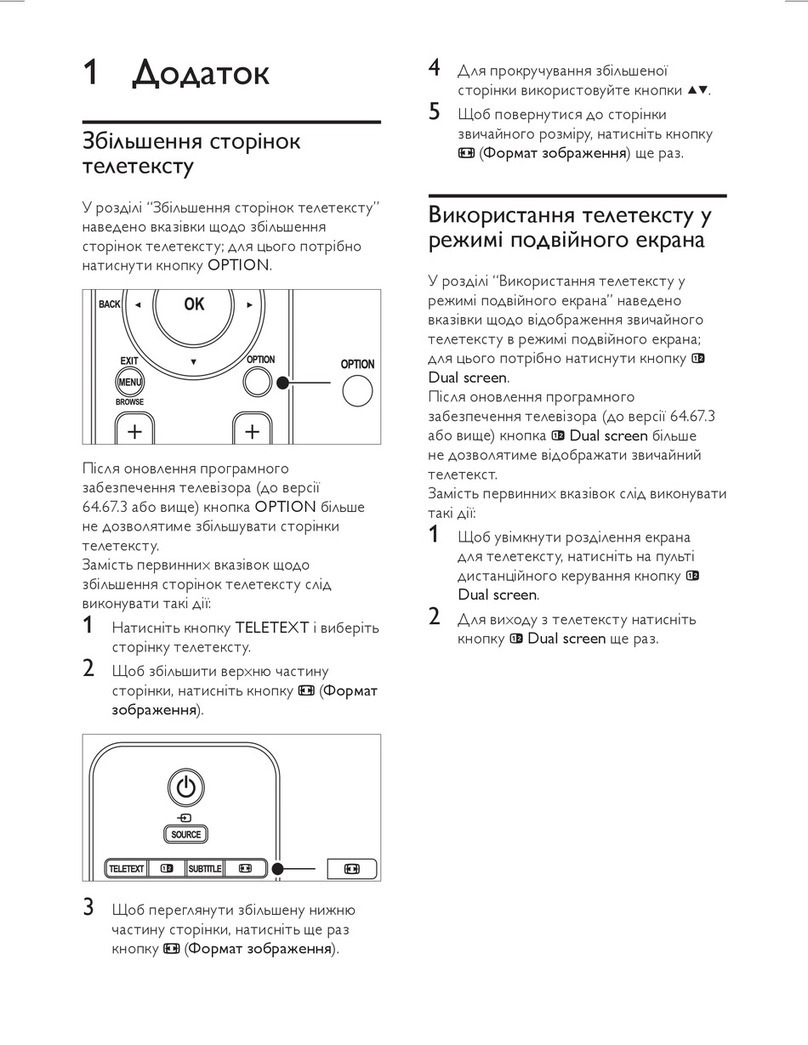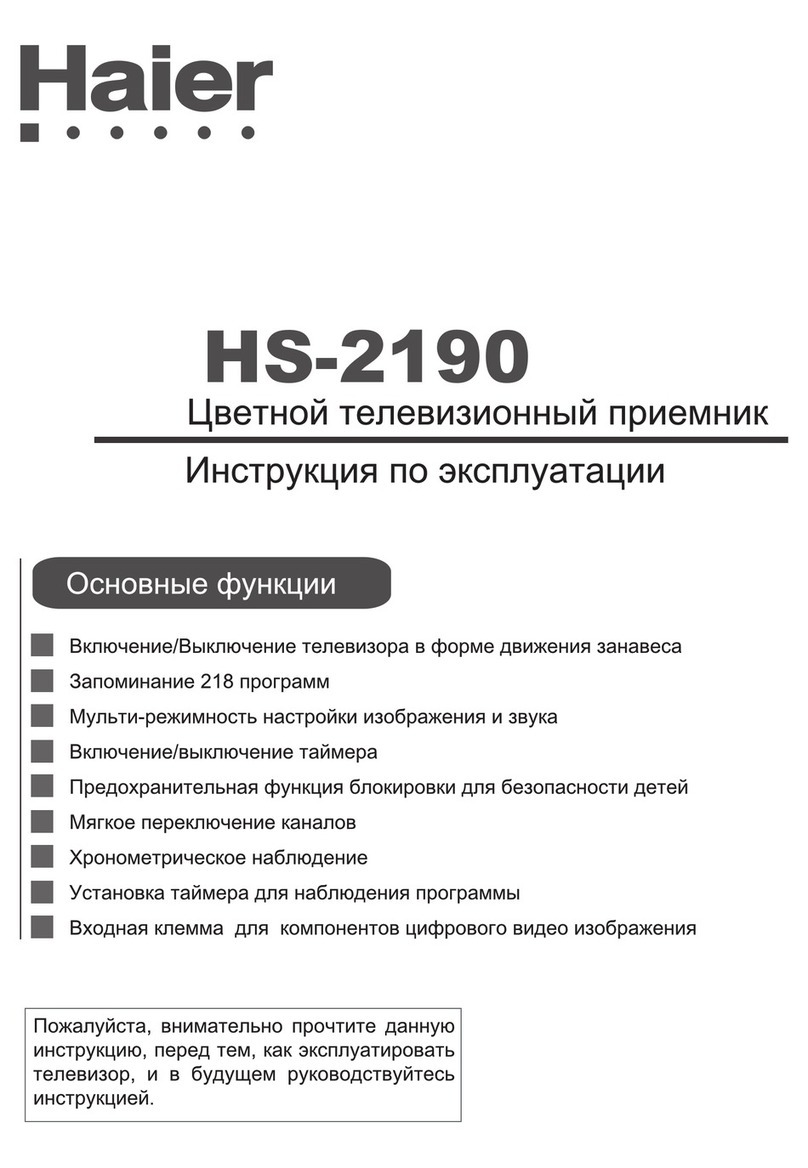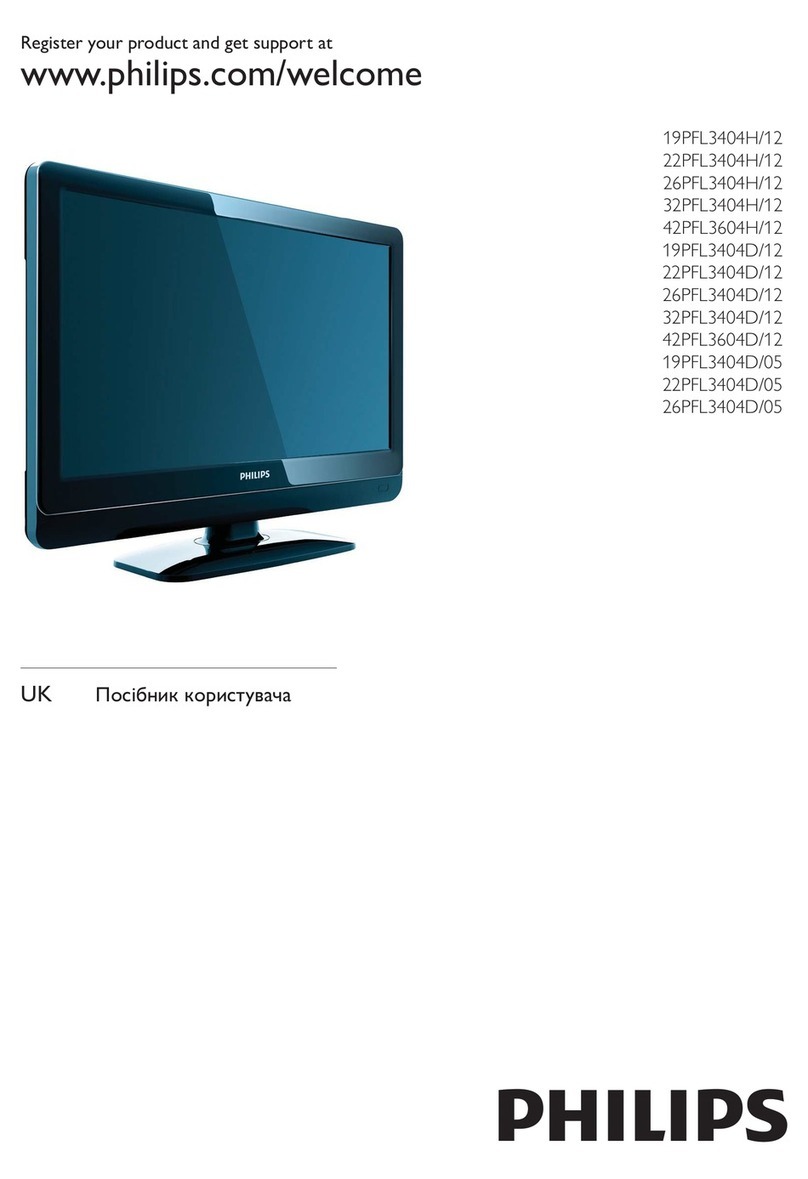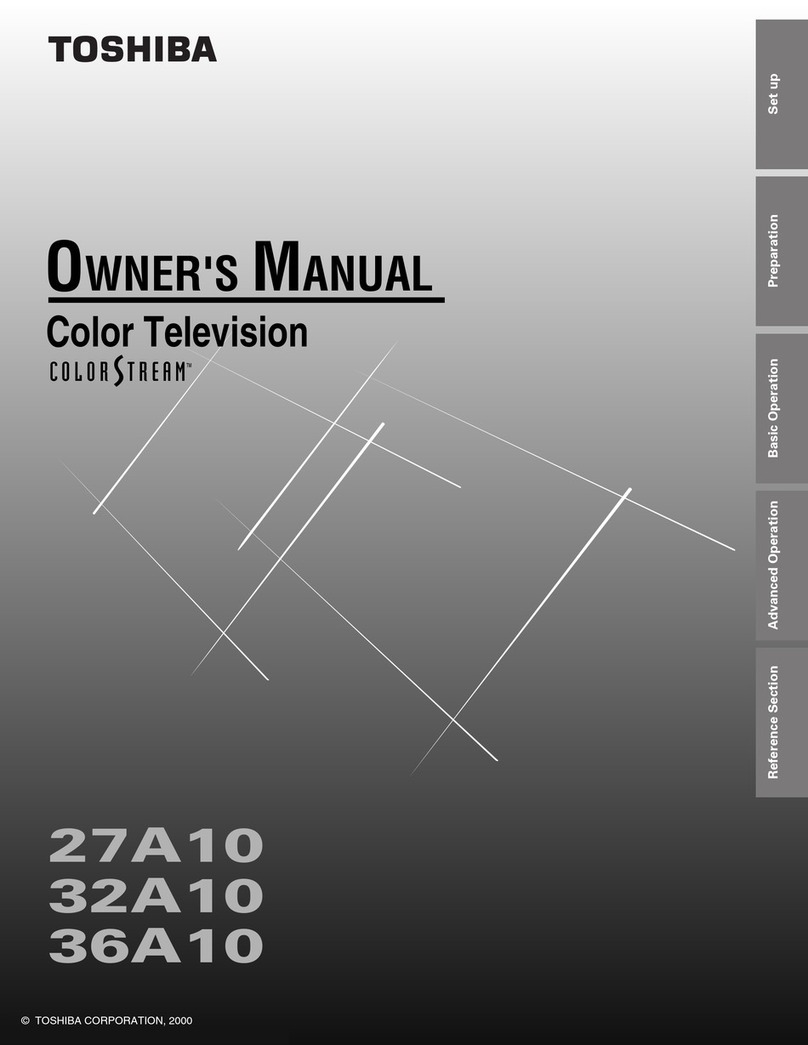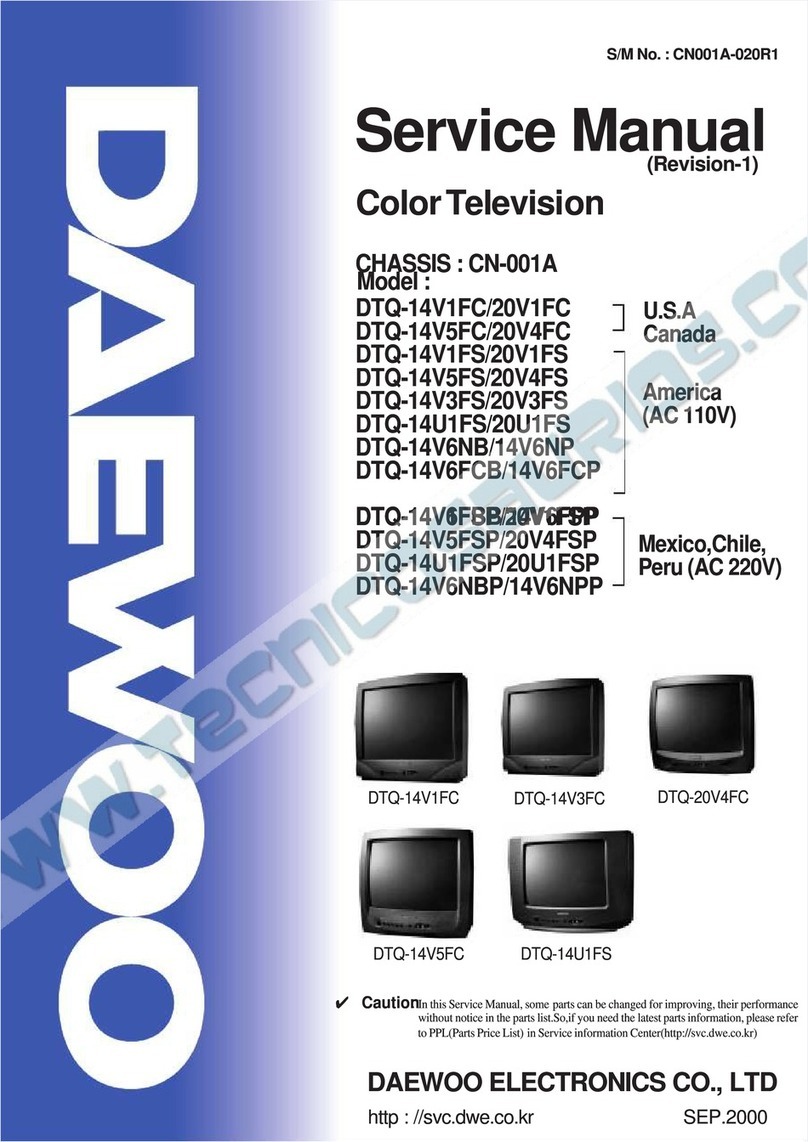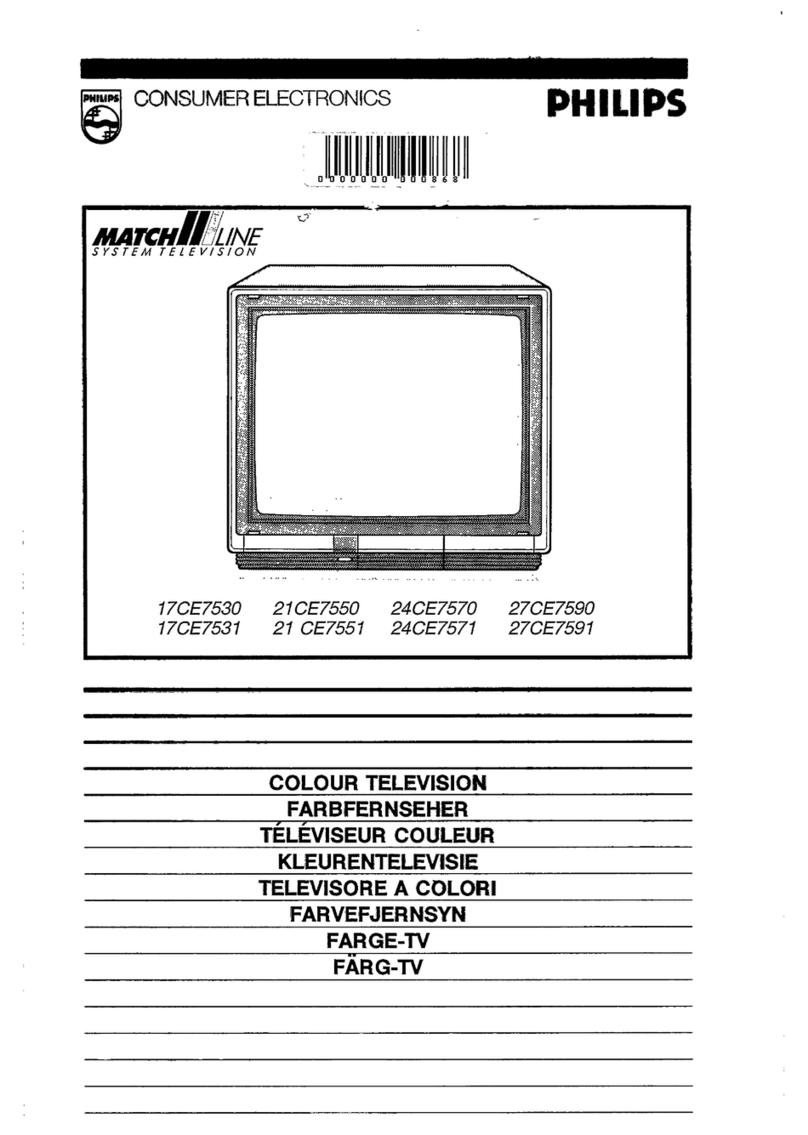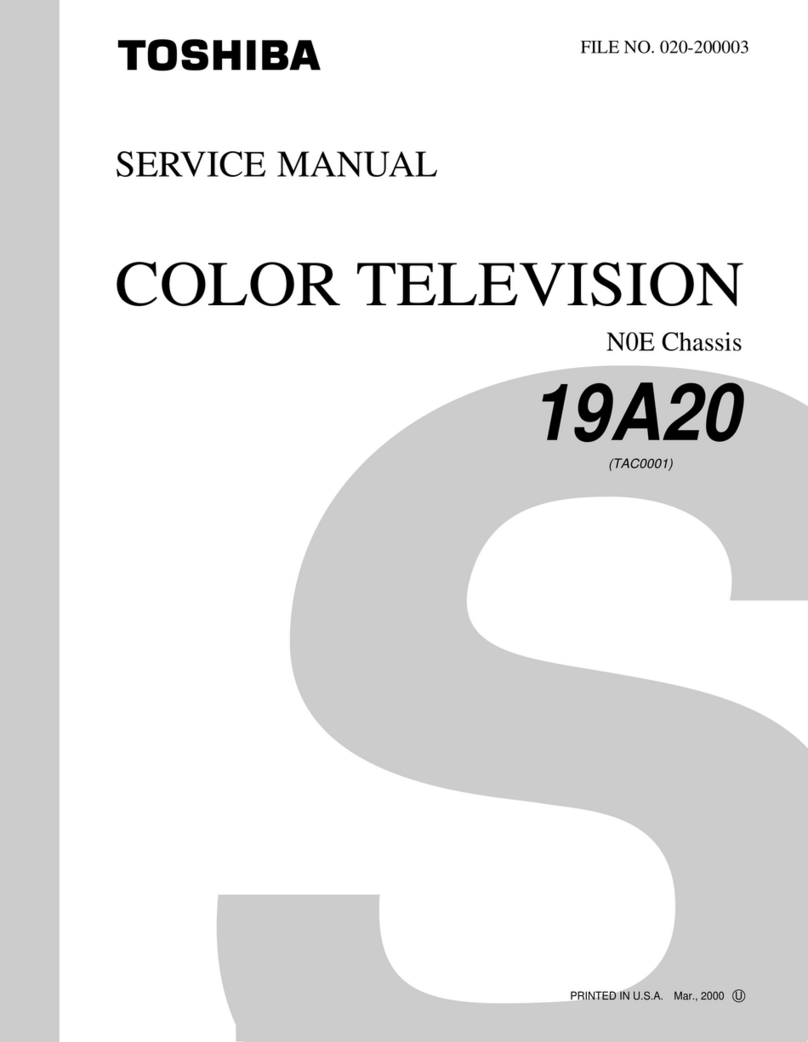1. Service mode 1
No.
0 Blank SERVICE MODE
28 Parabola adjustment 0~63 E/W PAR PDC E-W PARABORA 46 42
29 Corner adjustment 0~31 E/W COR PDC E-W CORNER 19 19
30 Trapezoid compensation 0~127 TRAPE PDC TRAPEZIUM 61 66
34 BELL filter adjustment 0~255 SCM BELL SECAM BELL FILTER 122 120
8 SECAM R-Y adjustment 0~15 R-Y SECAM R-Y 8 6
9 SECAM B-Y adjustment 0~15 B-Y SECAM B-Y 68
24 COLOUR sub adjustment 0~127 SUB COL V/C/D COLOUR 70 Center value to user COLOUR adjustment 60
25 COLOUR sub adjustment(DVD) 0~127 SUB COL DVD V/C/D COLOUR 67 Center value to user COLOUR adjustment the DVD mode 60
10 BRIGHTNESS sub adjustment 0~255 SUB BRI V/C/D BRIGHTNESS Center value to user BRIGHTNESS adjustment 122176
11 BRIGHTNESS sub adjustment (DVD) 0~255 SUB BRI DVD V/C/D BRIGHTNESS
Center value to user BRIGHTNESS adjustment the DVD mode 116
149
12 SUB CONTRAST sub adjustment 0~31 SUB CONT V/C/D SUB CONTRAST 20 17
13 SUB CONTRAST sub adjustment (DVD) 0~31 SUB CONT DVD V/C/D SUB CONTRAST 19 16
35 Sound volume adjustment 0~63 SUB VOL SPA VOLUME Max value to user VOLUME adjustment 4950
16 Vertical size adjustment (60Hz) 0~127 V-AMP60 PDC V-AMPLITUDE 110 97
17 Vertical linearity adjustment (60Hz) 0~31 V-LINE60 PDC V-LINEARITY 21 24
18 Vertical S type compensation adjustment (60Hz) 0~63 V S-CORR60 PDC V-S.CORRECTION 40 40
20 Horizontal position adjustment (60Hz) 0~31 H-CENT60 V/C/D H-PHASE 17 16
21 Horizontal size adjustment (60Hz) 0~63 H-SIZE60 PDC H-SIZE 31 27
27 Vertical position 0~3 V-SHIFT PDC V-SHIFT REG 2 2
31 Horizontal high voltage compensation 0~7 H-COM PDC H-COMPENSATION 4 4
26 Vertical high voltage compensation 0~7 V-COM PDC V-COMPENSATION 7 7
33 Vertical compensation 0~15 V-∫COR PDC V-∫CORRECTION 10 10
22 Colour decoder TINT adjustment (AUTO) 0~127 COL TINT AUTO V/C/D COLOUR DECODER 67 67
23 Colour decoder TINT adjustment (forcible) 0~127 COL TINT V/C/D COLOUR DECODER 56 58
32 Horizontal position 0~7 H-CENT PDC H-CENT 3 3
2 Vertical size adjustment (50Hz) 0~127 V-AMP50 PDC V-AMPLITUDE 110 97
1 Cutoff adjustment CUTOFF BKGD * * R30 G66 B0 G-D-62 B-D-72
3 Vertical linearity adjustment (50Hz) 0~31 V-LINE50 PDC V-LINEARITY 23 26
4 Vertical S type compensation adjustment (50Hz) 0~63 V S-CORR50 PDC V-S.CORRECTION 40 40
5 Vertical position adjustment (50Hz) 0~7 V-CENT50 V/C/D V-PHASE 4 5
6 Horizontal position adjustment (50Hz) 0~31 H-CENT50 V/C/D H-PHASE 13 14
7 Horizontal size adjustment (50Hz) 0~63 H-SIZE50 PDC H-SIZE 32 26
14 SUB-TINT adjustment 0~127 SUB TINT V/C/D TINT 59 Center value to user TINT adjustment
15 SUB-TINT adjustment(DVD) 0~127 SUB TINT DVD V/C/D TINT 54 Center value to user TINT adjustment the DVD mode 54
19 Vertical position adjustment (60Hz) 0~7 V-CENT60 V/C/D V-PHASE 1 2
Initial value Data range OSD display IC Data setting Initial value Remarks
